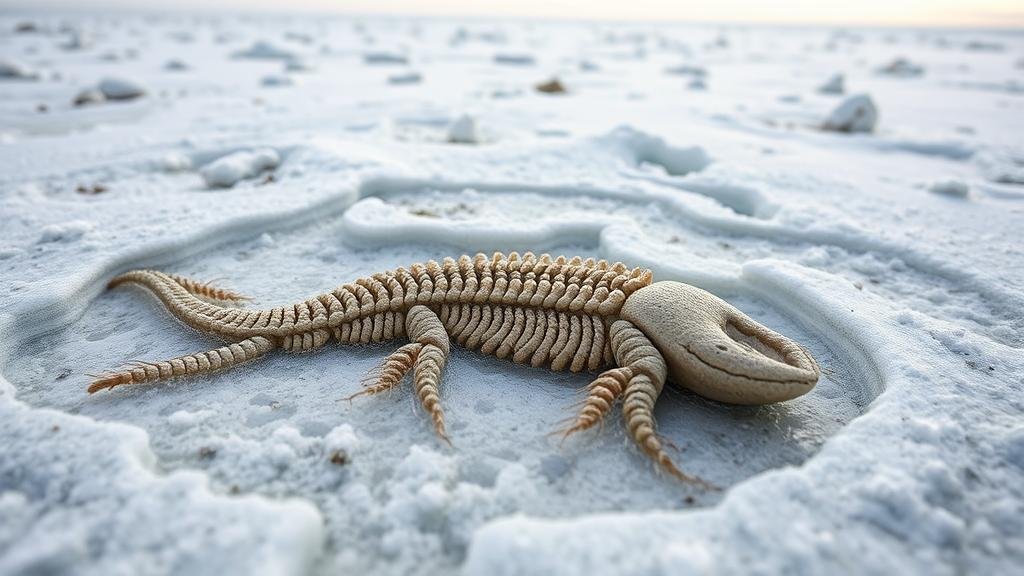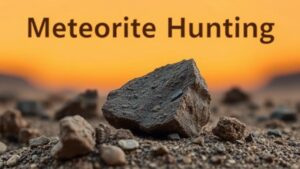The Frozen Fossil Fields: Discovering Ancient Marine Life in Arctic Permafrost
The Frozen Fossil Fields: Discovering Ancient Marine Life in Arctic Permafrost
The Arctic permafrost is a treasure trove for rockhounds and mineral collectors, offering a unique opportunity to explore ancient marine ecosystems that thrived millions of years ago. As climate change continues to thaw these frozen landscapes, more and more fossils emerge, revealing vital insights into prehistoric life. This article delves into the significance of these findings, the types of fossils discovered, and practical tips for collectors looking to explore this fascinating domain.
The Significance of Arctic Fossils
The Arctic region, particularly areas such as Alaska and Siberia, has been a focal point for paleontological research due to its well-preserved fossils. For example, marine fossils dating back to the Late Cretaceous period (approximately 145 to 66 million years ago) have been found, showcasing diverse species from that era.
In recent years, studies have revealed that as much as 1.5 million square kilometers of previously frozen land may be thawing, exposing fossils that have been locked away for eons. Researchers have discovered an extensive array of fossilized remains including:
- Ammonites, a type of squid-like cephalopod
- Corals that inhabited ancient shallow seas
- Fossilized fish scales and bone fragments
- Mollusks, including clams and snails
Collectors venturing into the permafrost regions can encounter an impressive variety of fossils. The following highlights a few notable types:
- Invertebrate Fossils: Specimens of jellyfish, sea urchins, and other marine invertebrates can provide clues about ancient oceanic conditions.
- Vertebrate Fossils: While primarily invertebrates dominate, some fossilized remains of early fish and marine reptiles have also been uncovered.
- Plant Material: Fossilized remains of ancient flora, such as ferns and cycads, which indicate the types of habitats that existed during warmer periods.
Scientific Importance
The frozen fossil fields are not just an archaeological curiosity; they hold invaluable data regarding climate patterns and marine biodiversity over geological time. For example, scientists can analyze carbon isotopes in the fossils to understand past greenhouse gas concentration, aiding predictions for future climate scenarios.
One significant study published in the journal Nature Communications reported evidence that marine ecosystems were radically different during the early Cretaceous period, showcasing a time of substantial biodiversity. This has led geologists to investigate what these ancient seas can teach us about current ocean health.
Practical Tips for Collectors
For rockhounds interested in exploring the Arctics fossil fields, preparation is key. Here are practical tips to optimize your fossil hunting experience:
- Research Local Regulations: Ensure compliance with local and national laws governing fossil collection, as guidelines vary significantly across regions.
- Equip Yourself Properly: Bring appropriate tools, including geological hammers, chisels, and sturdy field notebooks for documentation.
- Travel Considerations: Understand the environmental challenges, such as extreme weather and unstable terrain, ensuring you have the right gear.
- Join a Community: Connect with local rockhounding clubs or organizations that focus on fossil hunting in Arctic regions to gain insights from experienced collectors.
Conclusion: The Future of Arctic Fossils
As the Arctic continues to thaw, it presents an extraordinary chance to unearth the secrets of ancient marine life. For rockhounds and mineral collectors, the frozen fossil fields offer both adventure and the potential for significant finds that contribute to our understanding of Earth’s geological and biological history.
By approaching fossil hunting with respect for the environment and an eye for scientific inquiry, collectors may not only enrich their personal collections but also play a role in preserving the legacy of our planet’s diverse past.


